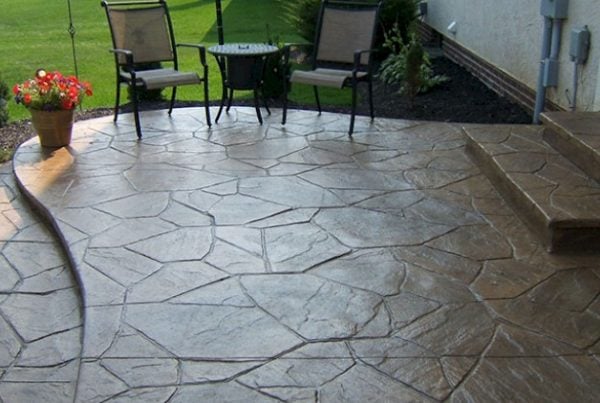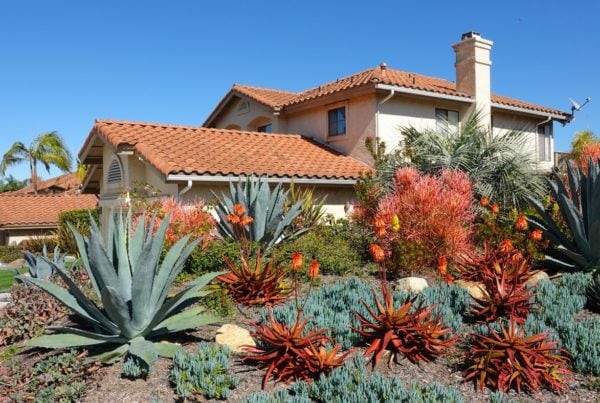Lush green lawns require significant attention, time and water. On the other hand, drought-resistant landscaping is a low-maintenance way to create lovely natural spaces that flourish in dry climates. Here’s how you can create a beautiful outdoor space without a lot of watering.
The Basics
Also known as xeriscaping, drought-resistant landscaping involves the use of naturally drought-resistant plant species that can survive in regions that don’t get much rainfall. The practice is also quite popular in communities with unforgiving water conservation regulations that make consistent irrigation hard or outright impossible.
Since it supports local plant species and exotic plant life from South Africa, the Middle East and Australia, xeriscaping is an attractive option for modern homeowners who want uniquely beautiful landscapes that require little upkeep and fewer resources.
To create your own drought-resistant outdoor spaces, it’s important to adopt some practical strategies to make sure your vegetation will survive and thrive.
Choose Native Plants
Xeriscaping works much better when you use grasses and plants which are native to your region. If you don’t know what kinds of grass to choose for your particular climate, buffalo grass and Bermuda grass are nice options which require less water and naturally reseed themselves. If you are just starting out, you should remove some or all of your existing grass first.
Use Lots of Mulch
Not only is it aesthetically pleasing to the eye; mulch is great at preventing weed growth and erosion. It also helps control soil temperature while reducing water loss due to excessive evaporation. Gravel and rocks are nice options in arid climates because they provide excellent drainage which allows water to better reach underlying plant roots deeper in the soil.
With that said, it’s important to choose the right kind of mulch. The last thing you want is to accidentally spread pests or weeds by selecting a mulch that’s not appropriate for your climate or your chosen drought-resistant vegetation.
 Create a Good Plan
Create a Good Plan
The most effective drought-resistant landscaping incorporates diverse vegetation with varying water requirements. Before you even think of planting anything, assess your lawn at different times of the day to see which areas get the most and least amount of sunlight. You can then divide your yard into arid, oasis and transition zones. Add your thirstiest plants to your oasis zone and plant the drought-resistant plants in the arid section. The transition zone will blend a drier environment with the greener, more lush vegetation in your oasis area.
Select Your Plants
Prairie grasses, succulents, shrubs and small-leafed plants are all good choices for drought-resistant landscaping. That said, your specific choices depend on your region and climate. By having three different planting zones, you can better manage your watering strategy. Still, you need to seriously consider your local climate; after all, while drought-resistant vegetation flourishes in dry climates, it will not survive in regions that see a lot of rain.
Water Intelligently
Even drought-resistant plants require a regular supply of water. You will generally have better success with a nice drip irrigation system. These setups leverage low-pressure delivery methods to promote more efficient water retention by forcing water deeper into the soil closer to plant roots. While it will take a greater initial investment, drip irrigation is very efficient and can save you more money over time.
Whatever you do, it’s generally best to try to keep things low maintenance. Even if you enjoy tending to your landscape, you will appreciate having a manageable setup. An elaborate landscape can be difficult to manage during the hot, arid summer months. What’s more, an improperly placed irrigation system could cause your new plants to struggle or even die, resulting in a dry, dead landscape and hundreds of dollars in wasted costs.
The right setup can make all the difference, allowing you to have a beautiful outdoor setting that can hold up to the driest weather. It helps to get input from professionals who know how to select beautiful plants that will survive and flourish in high temperatures and harsh, dry weather.
At RMPS Landscaping, we provide a diverse variety of landscaping services, from stonework and plants sod, hardscaping, trees and full-scale landscape renovations. Our skilled experts will collaborate with you to learn your preferences and develop a strategy that meets your needs. Contact our knowledgeable experts to find out how we can help bring your boldest vision into the real world.





